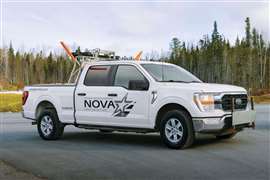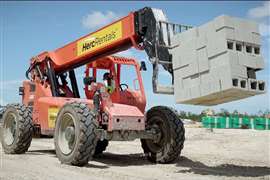VIDEO: An overview of Brisbane's AU$ 2.2 billion, 6.8 km-long CLEM7 tunnel
06 May 2010
The AU$ 2.2 billion (US$ 1.99 billion) Clem Jones Tunnel (CLEM7), Brisbane, Australia is a 4.8 km-long tunnel named after the city's longest serving Lord Mayor (1961 to 1975).
The 6.8 km-long tollway consists of twin, 2-lane tunnels that link five major roads north and south of the Brisbane River and is the city's largest ever infrastructure project.
Queensland-based tollway company, RiverCity Motorway Group, operates the CLEM7 using an electronic system that identifies motorists via an electronic tag fitted inside their vehicles or through number plate recognition technology.
The CLEM7 is also the first section of the city's new M7 motorway, due to be completed in 2012 following the construction of the Airport Link tunnel. The M7 will provide a direct link from Woolloongabba to the airport and fast-growing northern suburbs.
Clem Jones died in 2007, aged 89.
In April 2006, Brisbane City Council awarded CLEM7, formerly known as the North South Bypass Tunnel project to RiverCity Motorway (RCM), with construction being handled by a partnership of companies made up of Leighton Contractors and Baulderstone/Bilnger Berger, the LBB joint venture.
Tunnelling
Tunnelling on the Clem Jones Tunnel (Clem7) was complete after the second tunnel boring machine broke through at Woolloongabba on 26 April 2009.
The breakthrough represented an important milestone for the Clem7 with both 4000-tonne boring machines (named Matilda and Florence and costing AU$ 50 million each) having completed their historic 4.3 km journey from Bowen Hills to Woolloongabba.
The CLEM7 tunnel - Facts and figures
- Length 4.8 km twin, 2-lane tunnels
- Rock excavated 3.5 million tonnes
- Tunnel lining segments 38000
- Concrete 280000 m3
- The CLEM7 connects to Lutwyche Road, Inner City Bypass, Shafston Avenue, Ipswich Road, Pacific Motorway and the Airport Link (opening 2012).
- The tollway is monitored 24 hours a day, 7 days a week by the Tollway Control Centre
- There are 2 traffic lanes in each direction
- The tollway is 6.8 km in length
- The tunnel is 4.8 km in length
- The lowest point the tunnel is 60 m below the Brisbane River
Construction of the CLEM7
- Over 11000 people have worked on the project
- The CLEM7 was excavated using Roadheader machines and two Herrenknecht manufactured Tunnel Boring Machines (TBMs) which were 12.4 m in diameter, over 250 m long and weighed 4000 tonnes.
- It took 22 people to operate these machines where they progressed up to 20 m a day using 78 tungsten carbide tipped 19 inch (480 mm) disc cutters
Bridges
- Number of bridges: 18
- Number of beams: 398 Super T bridge beams
- Length of beams: 25 km if placed end-to-end
- Number of decks: 1345
- Biggest beam: 39 m long and weighs 75 tonnes
Major milestones
- February 2005 - Environmental Impact Statement issued
- April 2006 - Contract awarded to RiverCity Motorway
- August 2006 - RiverCity Motorway admitted to the official list of the ASX
- September 2006 - Site establishment and tunnel preparation
- February 2007 - Start of Roadheader tunneling
- December 2007 - Start of TBM 1 (nicknamed Matilda)
- March 2008 - Start of TBM 2 (nicknamed Florence)
- September 2008 - TBMs progress underneath Brisbane River
- January 2009 - Both TBMs breakthrough at Kangaroo Point
- May 2009 - Completion of tunneling
- December 2009 - Tollway Control Centre goes live






